Changing people’s behavior can make bear life better
Bears scare people if they hang close to houses. Here’s how people and bears can bear it
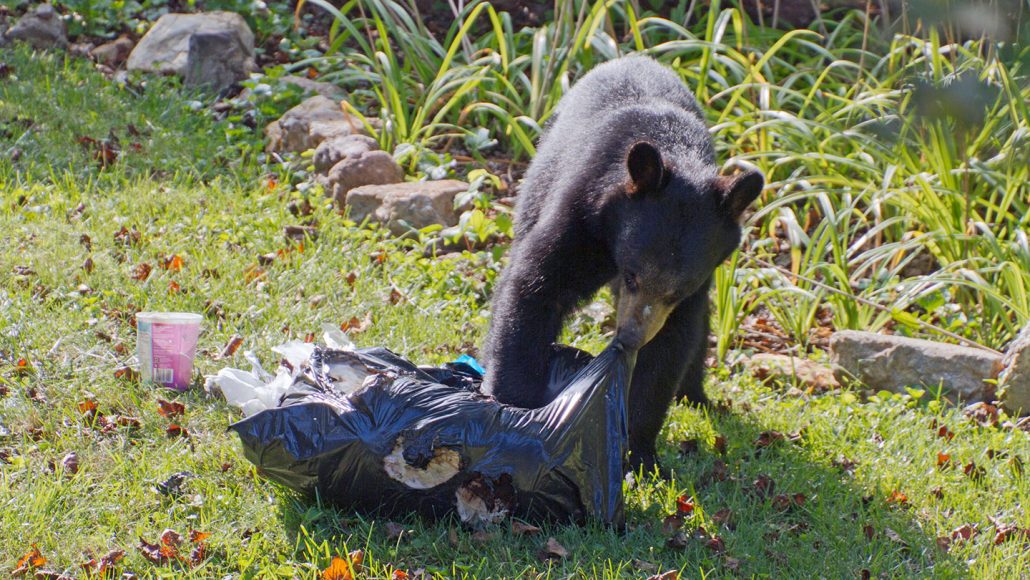
A young black bear hits a garbage buffet. As people and black bears live closer to each other, scientists are studying how to make sure both bears and people can thrive.
AwakenedEye/iStock/Getty Images Plus
No one expects a bear in the parking lot. When Seymour Kankel, 10, was getting in the car to go to summer camp in 2019, he wasn’t exactly keeping an eye out for bears. But there it was, about 30 meters (30 yards) away, crawling calmly out of a dumpster.
Seymour, a fifth grader who goes to Inspired Teaching Demonstration School in Washington, D.C., was heading to a summer camp in Killington, Vt. His family wasn’t in the woods. They were at a condominium, with tennis courts and parking lots — and black bears.
One of eight species of bears living worldwide, black bears (Ursus americanus) are found from Alaska all the way down through Mexico. Black bears aren’t too big when it comes to bears. They usually stand about one meter (three feet) high at the shoulders, and between 1.5 and two meters (5 to 7 feet) when they stand up on their back legs.
Black bears were once more common than they are today. But as people cut down North American forests, black bears were left with fewer places to hide. They were nearly killed off by the early 1900s. Then governments started to pass laws to protect them. Now, scientists estimate as many as 800,000 black bears live in North America. There are as few as 10 in places like Rhode Island and up to 160,000 in British Columbia, Canada.

Seymour was surprised to see a bear. But the bear wasn’t at all shocked to see him. “I don’t even think it noticed us,” he says. “It just casually climbed out of the dumpster and walked into the woods.” The bear wasn’t that big, he recalls, “smaller than a couch, but bigger than a chair.” Still, Seymour was a little nervous. “It was a bear!” he says. “You know, like lions and tigers and bears! They’re scary.”
Encounters like the one Seymour had aren’t all that rare. People and black bears are running into each other more and more. That’s partially because people are spending more time in wild areas — hiking, camping and more. They’re also living in areas near forests and mountains, areas where bears like to hang out. And since becoming protected, black bear populations have been growing.
Most of the time, bears and people live near each other with no problem. But sometimes bears get too close for human comfort. They might rip apart garbage bags or get hit by a car. They might even attack livestock, pets or people. At that point, wildlife managers may come and take the bear away. Bears that continue to cause problems may be killed. To better understand how bears and people might come into conflict, scientists are studying how bears change their behavior to survive in a human world. Researchers also are trying to figure out how people might change their behavior — for their good and that of the bears.

Educators and Parents, Sign Up for The Cheat Sheet
Weekly updates to help you use Science News Explores in the learning environment
Thank you for signing up!
There was a problem signing you up.
Hungry for people snacks
People need food and a place to call home. Bears do too. But while people need several meals a day all year round, black bears stock up over summer and fall for the winter ahead. Then they’ll take to their dens and stay there until spring, burning off the fat they put on.
To pack on the pounds, a black bear consumes up to 20,000 calories a day in summer and fall. This is about 10 times what an adult human consumes each day. In the wilderness, a bear gets those calories from berries, fish and other natural sources. If it’s living near people, it might hit up birdfeeders, pet food or trash.
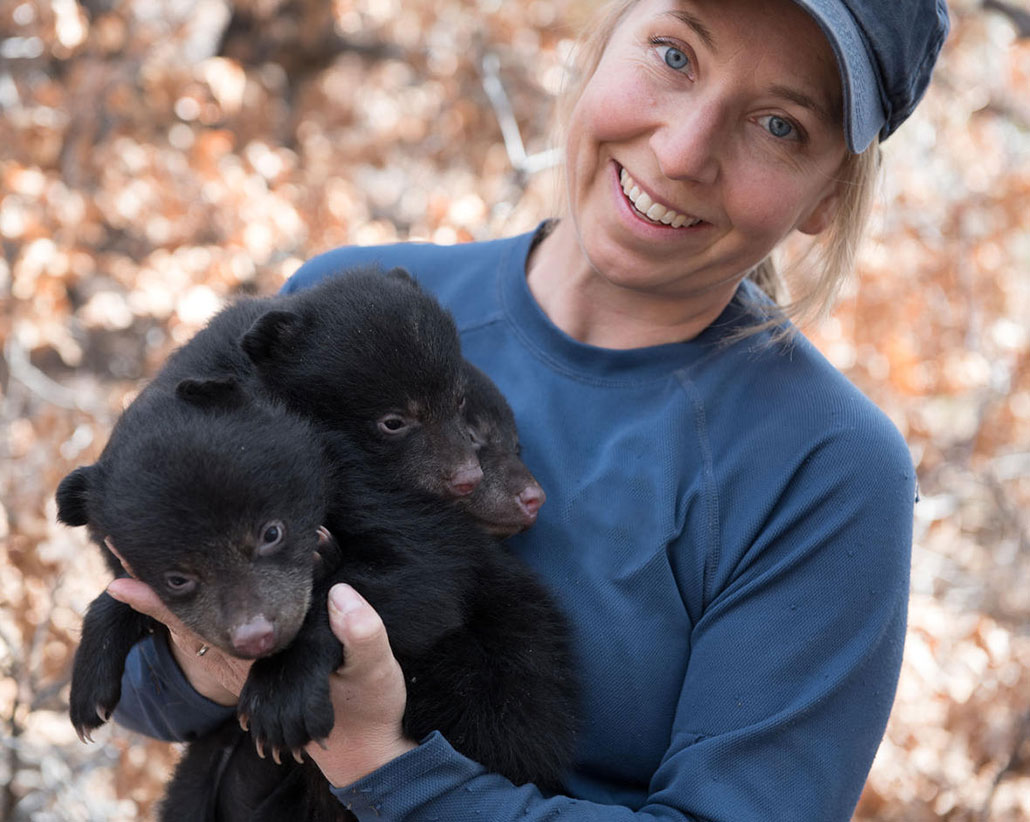
Once winter approaches, a black bear will den in “all kinds of amazing places,” explains Heather Johnson. “Under trees, in mineshafts, under big rocks…. Some [dens are] just dug out of the ground.” Johnson is a wildlife biologist with the U.S. Geological Survey and Alaska Science Center in Anchorage.
When bears live near people, they den near people, too. Johnson helped with a bear den in Aspen, Colo., when four sleepy bears were found under someone’s front porch. “The family had come to visit [their] vacation home and the lights weren’t working,” she says. An electrician looked under the porch to check the electrical box and saw bleary bear eyes blinking back.
The bears were not hibernating. “They’re considered to not be true hibernators,” Johnson explains. Their body temperatures drop a little — by about four degrees Celsius (7 degrees Fahrenheit). In contrast, their metabolism — the chemical activity in their cells — drops by almost two-thirds. This saves energy and their stored fat burns off slowly. But by keeping their temperature high, the bears stay ready to respond to threats.
Bears den to conserve energy when the weather is cold and food is scarce. In places like Colorado, they’ll settle down for their long winter’s nap in the middle of October and might not face the world again until mid-April. But if conditions are right, Johnson has found, bears might not bother to den so long.
By putting tracking collars on 51 black bears, Johnson and her colleagues were able to see when bears were snuggled warm in their dens and when they were out and about. Bears foraged longer in exceptionally warm autumns, they found. If fall temps were just 1 degree C (about 1.8 degrees F) warmer on average, bears shortened their snooze by 2.3 days. That means climate change may keep bears out late.
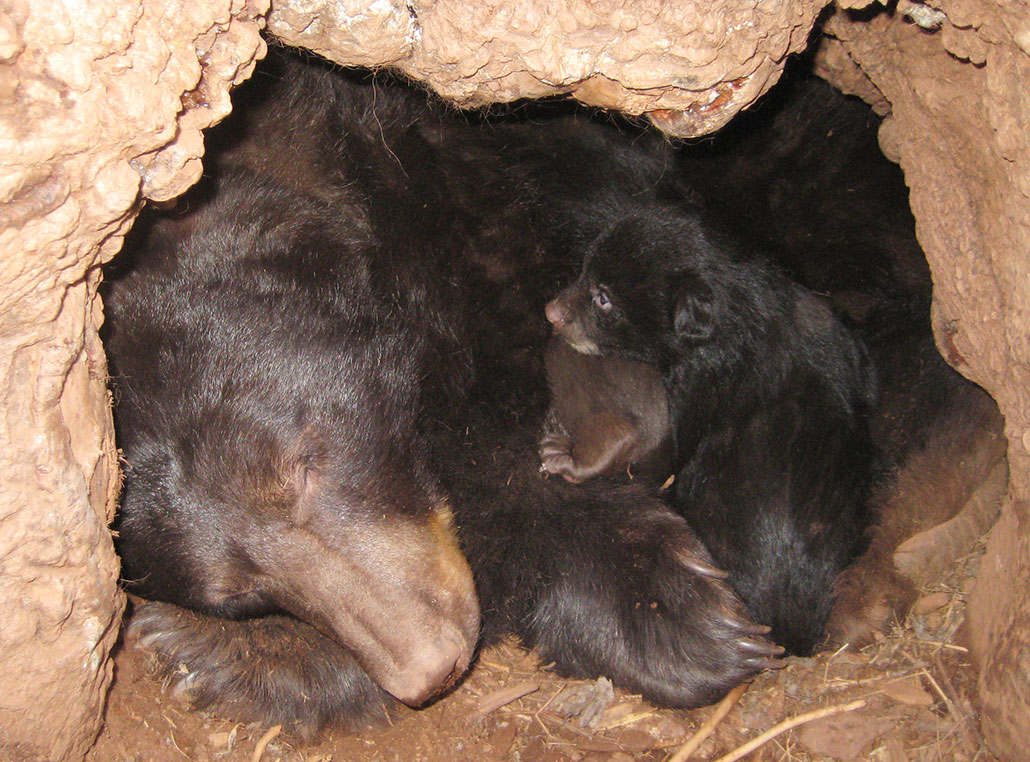
Bears also cut their sleeping time when more natural food, was available in late fall, such as acorns or berries. And when bears were near human communities, they also delayed denning to dine on people food. Johnson and her colleagues published their results in 2018 in the Journal of Applied Ecology.
It might seem like warmer weather and more food would be good for bears. They would need to spend less time in their dens and conserve less energy. In fact, bears need their beauty rest. In another study Johnson and her colleagues again showed that bears who feasted on human food hibernated less. Cells in these bears also showed more signs of aging. The worry is that these bears may not live as long. Humanity’s buffet, a warmer climate and shorter sleep might ultimately spell bad news for bears. The scientists published those findings in 2019 in the journal Scientific Reports.
Closing the bear buffet
Bears aren’t seeking out people and their food on purpose, explains Stacy Lischka. It’s people who are moving near bears. She’s a conservation social scientist with Conservation Science Partners in Fort Collins, Colo. To protect other species, she studies human behaviors, such as how people interact with bears.
As people build houses and cabins, they bring food with them. A hungry bear can sniff out food eight kilometers (five miles) away, Lischka explains. So by building homes in bear country, she says, “We’re sort of setting ourselves up for increased interactions.”
Bears find it hard to resist human food. In the wild, it takes bears a lot of time and energy to get the calories they need. A far easier option: “Walk down the street when everyone has conveniently put their garbage can out at the same time on the same day.” Lischka says the bears can knock over those cans “and sort of hit the fast-food drive-thru.”
There have always been bears around the town of Durango, Colo. But in the late 1990s, as the town’s population grew, bear run-ins rose too. In 1986, there were fewer than 50 contacts there between black bears and humans. Sixteen year later, there were more than 400. And by 2012, the number of bear sightings and incidents had climbed to more than 1,500. Some people began to worry for their safety and that of their pets. “It made people feel threatened,” Lischka explains.
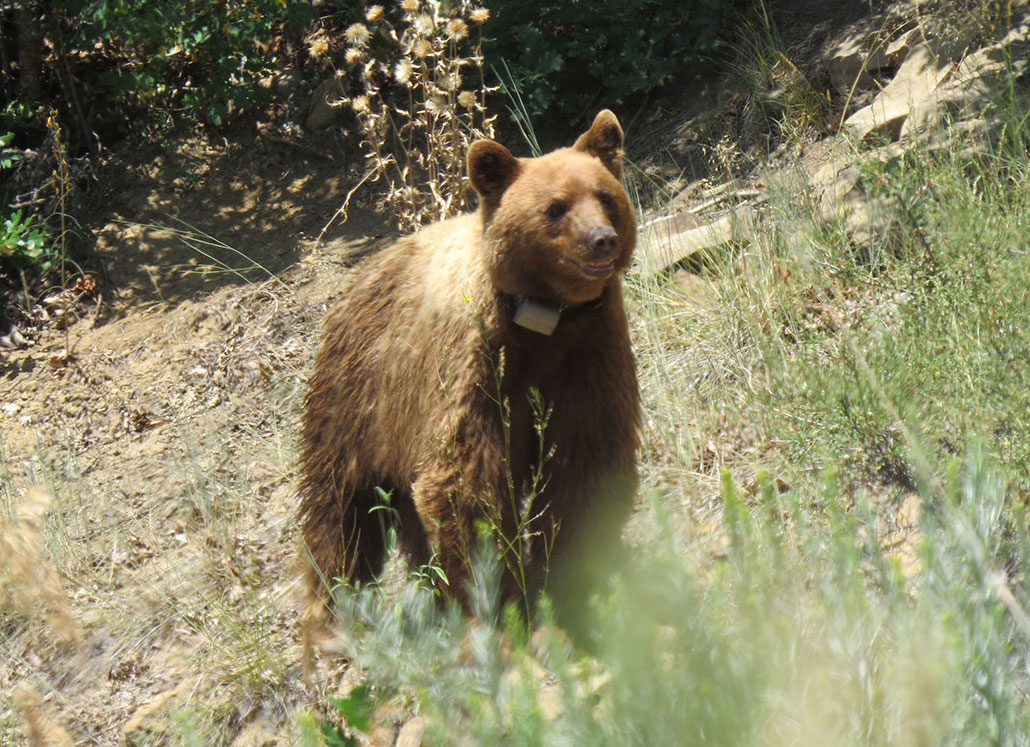
Black bears don’t usually bother anyone. But if a bear feels threatened, it might do something like a bluff charge. That’s when a bear runs at a person but doesn’t attack. Even if no one is hurt, it can be terrifying. And authorities may kill the animals in response.
One way to reduce contact with bears is to remove the fast-food option. The hardest part is convincing people to do that, Lischka says. They need to keep bird feeders out of reach. They musn’t leave out pet food. Most importantly, they need to lock up the trash.
In Durango, for example, a simple garbage can won’t do. Bears just take off the lid and dive in. The garbage cans must be bear-resistant. These cans are bigger and heavier than normal and too thick for a bear’s claws to tear into. Their lids also lock shut.
These garbage cans cost much more than a regular can. To get more people to use them, Johnson and Lischka handed out free bear-resistant trash cans in neighborhoods around Durango. Later, these communities had 60 percent fewer conflicts with bears.
“It may seem like a no-brainer,” Lischka notes. But it’s not that simple. Just having a bear-resistant can doesn’t mean it gets used — or used properly. In fact, half the people given the cans didn’t lock them. Many others locked them only some of the time. “People think, ‘my neighbor had a bear get into their garbage and so I locked my can,’” Lischka says. “’Then my neighbor didn’t have another bear get into their garbage and I didn’t have one get into mine, so I didn’t lock it the second time.'”
Locking away the fast-food joint can only go so far in reducing bear encounters, though. That’s why Lischka also is studying how to make people more tolerant of bears in their midst.
The best way, she and Johnson have showed, is to think positive. In Durango, for example, people often move in because they want to be near nature. Nature includes bears. “Talk about the important ecological role that bears play and how the interactions with bears can help you feel connected to nature,” she says. This nature-first mindset is still being tested. But in 2018, Lischka and Johnson shared their new model for helping bears and people get along in Biological Conservation.
Unbearable people
People might be afraid of bears, but that fear goes both ways. In fact, when black bears live near humans, they walk in what’s called a landscape of fear, says Kathy Zeller. She is a research biologist at the Aldo Leopold Wilderness Research Institute in Missoula, Mont.
A “landscape of fear” is the idea that animals think about risks in everything they do, Zeller explains. “Say I’m a deer, and I see a field. But if I take advantage [of the field], do the benefits outweigh the chance of being attacked by a wolf?” The deer must weigh the benefit of eating lunch versus the risk of becoming lunch.
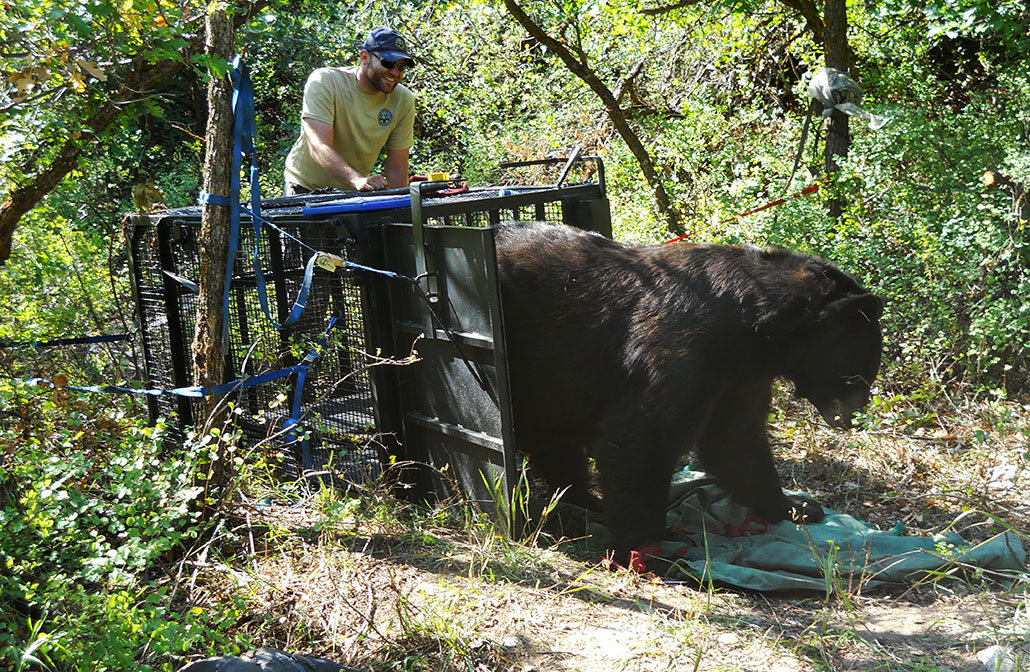
Black bears living near people live in a landscape of fear too, especially when they want to dine on human leftovers. “They view us as a risk,” Zeller notes. “They’re weighing these high-calorie foods — the reward — with the risk of encountering people.”
Zeller and her colleagues trapped more than 70 black bears in Massachusetts and fitted each with a tracking collar. Then they tracked the bears through spring, summer and fall. The bears lived in different places. Some were in farmlands, wetlands or forests. And some bears lived among lots of houses and roads.
Where bears lived determined how they behaved, Zeller showed. Those closer to people were “ not moving around as much as animals in the wild.” The black bears also moved at different times. “If they’re typically observed in a natural area, they’re more active during the day,” she notes. But when black bears live around people, they “shift to being more active at night.”
The bears were acting like they lived in a landscape of fear, changing how they moved to avoid times when people were out and about. Even when they relied on human food, they tried to steer clear of people. Zeller and her colleagues described their findings in the journal Movement Ecology in 2019.
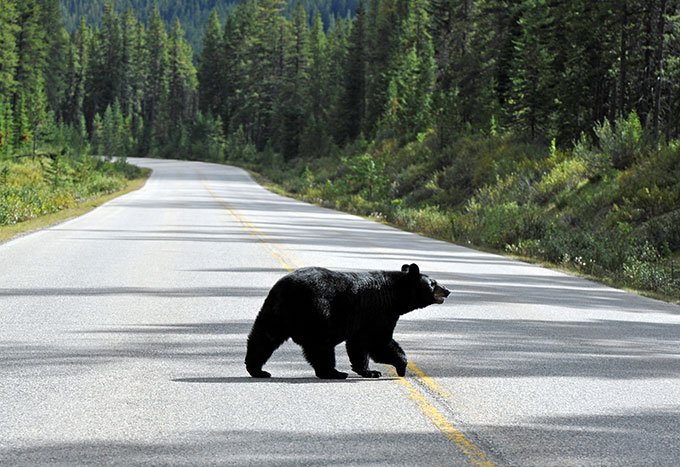
Sometimes bears just can’t avoid people. Johnson and her colleagues have found that when natural foods were scarce, Durango bears relied on the human trash buffet more. And overall bear numbers went down when natural foods were low. Meanwhile, the numbers of bears hit by cars in the area went up. Way up. In 2011, when there were lots of natural berries for bears, only two died near Durango after being hit by cars. The next year, when few berries were around, nearly 20 bears there got hit.
The bears were turning to human food — and running the risk of becoming roadkill. Johnson and her colleagues reported their findings in the journal Biological Conservation in 2018.
Our garbage might be a big draw to bears, but the consequences of getting caught often outweigh the benefits of an easy meal. Still, these animals are figuring out how to thrive. “In downtown Boston there won’t be bears,” Zeller says. But at many other places, “they will be successful. They’re figuring it out.”
Bears are bending their own behavior to coexist with people and their activities. And people will need to do the same — even if it means just locking up their trash.







